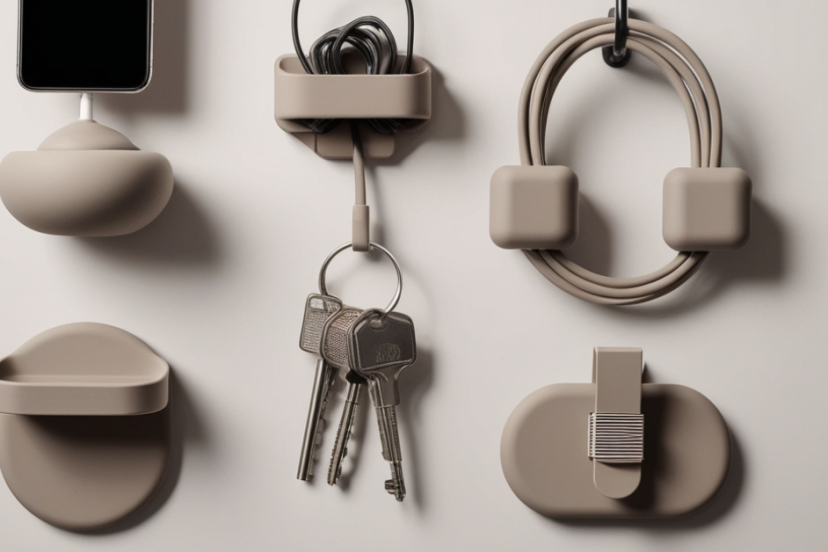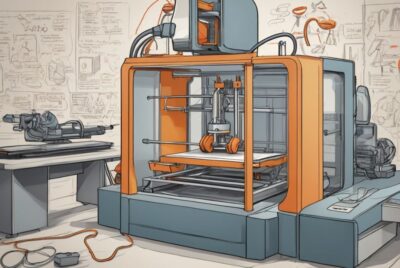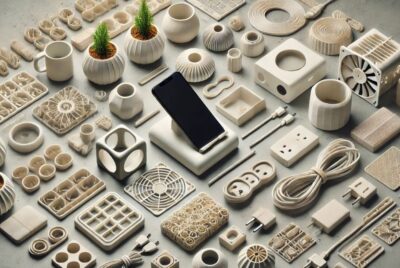Best 3D Printed Items: 20 Useful Things You Never Knew You Needed
Welcome to the World of 3D Printing!
Have you ever thought about the wonders of 3D printing? From creating simple household items to revolutionizing industries, 3D printing has opened a world of possibilities! But what are some of the most useful things you can print today? Let’s dive into this exciting world and discover 20 useful things to 3D print that you never knew you needed!
Why 3D Printing?
The Revolution in Your Hands
Welcome to a world where the only limit is your imagination! 3D printing, also known as additive manufacturing, is a technology that has fundamentally transformed how we create, innovate, and solve problems. But what exactly makes it a revolution, you ask? Let’s break it down.
Firstly, 3D printing democratizes manufacturing. Before, creating a product involved complex supply chains, large factories, and significant capital. Now, anyone with a 3D printer can turn an idea into a physical object from the comfort of their own home or local makerspace. This shift isn’t just about convenience; it’s about empowerment. From entrepreneurs creating prototypes to students exploring STEM concepts, 3D printing is making creators out of consumers.
But it doesn’t stop there. Traditional manufacturing methods can be wasteful, often involving cutting away material to shape an item. 3D printing, however, is additive – it builds objects layer by layer, using only the material needed. This means less waste, making it a more sustainable choice that aligns with a growing global emphasis on reducing our environmental footprint.
Moreover, the speed of innovation is accelerated with 3D printing. In the medical field, for example, this technology is used to create custom prosthetics tailored to individuals’ unique needs, improving comfort and functionality. In aerospace, engineers print complex parts that are lighter and stronger, enhancing efficiency and safety. These are just a few examples of how 3D printing is not merely a tool but a catalyst for innovation across industries.
The beauty of 3D printing lies in its versatility. Whether you’re printing a simple household item to make life a little easier or you’re a researcher developing new materials, the process remains essentially the same. This universality means that once you learn to 3D print, you can apply that knowledge in countless ways, continually growing with the technology as it evolves.
The revolution of 3D printing is in how it transforms every individual into a creator, innovator, and problem-solver. It’s about personal empowerment, sustainability, and the acceleration of human ingenuity. So when we say 3D printing is a revolution in your hands, we mean it quite literally – with this technology, you hold the power to bring ideas to life like never before. Welcome to the revolution!
Cost-Effectiveness and Customization
In the dynamic landscape of 3D printing, two of the most compelling advantages are cost-effectiveness and customization. But how do these factors change the game for individuals and businesses alike? Let’s delve deeper.
Cost-Effectiveness: Doing More with Less
Traditionally, manufacturing requires costly moldings and machinery, suitable only for mass production to justify the expenses. 3D printing sidesteps these costs. It requires no molds and reduces the need for multiple manufacturing tools, making it perfect for low-volume production and prototyping. This is especially beneficial for small businesses or individuals who want to experiment without the hefty investment.
Moreover, 3D printing minimizes material waste. Traditional subtractive manufacturing methods begin with a block of material, carving out the desired item and discarding the rest. In contrast, 3D printing adds material layer by layer to create the object, using exactly what is needed. This efficiency not only reduces costs but also aligns with sustainable practices by minimizing waste.
Customization: The Personal Touch
Customization is where 3D printing truly shines. Imagine creating products tailored to individual preferences or needs without the astronomical costs typically associated with bespoke items. With 3D printing, customizing products doesn’t require starting from scratch each time; it’s as simple as adjusting a digital model. This capability opens a world of possibilities:
- Personalized Products: From custom jewelry designs to ergonomic gadgets shaped to an individual’s grip, personalization is at your fingertips.
- Healthcare Advances: 3D printing allows for prosthetics and implants tailored to the patient’s anatomy, improving comfort and functionality.
- Home Solutions: Create or modify everyday items to fit specific spaces in your home or adapt them for unique uses.
This level of customization isn’t just about aesthetics or convenience; it’s about improving functionality and satisfaction. It allows for innovation in how products are used and interacted with, making them more intuitive and effective.
The Intersection of Cost-Effectiveness and Customization
When cost-effectiveness and customization intersect, they create a potent environment for creativity and entrepreneurship. Small businesses and startups can now compete with larger companies by offering customized solutions that were once cost-prohibitive. Consumers benefit from having access to products that meet their specific needs and preferences, often at a lower cost than traditional, less personalized items.
In educational settings, this intersection fosters a hands-on learning environment where students can design and produce tangible models, enhancing their understanding and retention of complex concepts. For hobbyists and DIY enthusiasts, it means turning visions into reality without breaking the bank.
The twin benefits of cost-effectiveness and customization make 3D printing a uniquely valuable technology in the modern world. They democratize manufacturing, allowing anyone with a 3D printer to produce bespoke items on a budget. This isn’t just a technological advancement; it’s a shift in how we think about creating, using, and valuing the objects in our lives. Whether you’re a business looking to offer more personalized products or an individual wanting to bring your unique ideas to life, 3D printing offers the tools to do so efficiently and affordably. It’s not just about saving money; it’s about enhancing creativity, personalization, and accessibility in manufacturing.
Top 20 Useful Things to 3D Print
For the Home
When it comes to 3D printing, the home is a treasure trove of opportunities for improvement, personalization, and innovation. The ability to design and create objects tailored specifically for your living space opens up a world of possibilities. Here’s a closer look at how 3D printing is revolutionizing home life.
Customized Hooks and Hangers
Hooks and hangers might seem like mundane objects, but they are fundamental in organizing spaces. With 3D printing, you can design hooks that perfectly fit the aesthetic of your home or the specific weight and shape of the items you need to hang. Whether it’s a coat hanger shaped to preserve the integrity of your favorite jacket or a hook that fits into an awkward corner of your kitchen to hang utensils, the customization is endless.
Planters
Plant lovers rejoice! 3D printing allows you to create planters that can be customized for the plant’s specific needs and your design preferences. This means drainage holes where you need them, sizes that fit your space perfectly, and designs that complement your home’s look. Whether you prefer a minimalist style or intricate patterns, your greenery can now reside in homes as unique as the plants themselves.
Kitchen Gadgets

The kitchen is another area where 3D printing shines, offering a myriad of opportunities to enhance both the functionality and aesthetics of the space. Imagine bespoke cookie cutters for a special occasion, replacement parts for your favorite appliances, or even customized handles for cabinets and drawers. You can design utensil holders that fit perfectly into your drawer or create a stand for your cookbook or tablet that makes following recipes easier.
Personalized Decor
Why stop at functionality? 3D printing allows you to infuse your personality into your home with custom decor items. Create vases, wall art, or even lampshades that reflect your personal style and fit your space perfectly. With 3D printing, you can turn your home into a gallery of your unique creations.
Repair and Replacement
One of the most practical uses of 3D printing at home is creating replacement parts or components for furniture, appliances, and other household items. Instead of discarding a chair with a broken leg or a toy missing a piece, you can design and print the exact part you need. This not only saves money and reduces waste but also extends the life of your belongings.
Organizational Tools
Organization aids are a necessity in any home, and 3D printing offers limitless possibilities in this arena. Drawer dividers, cable holders, and shelf organizers can all be customized to fit your exact needs and spaces. You can print boxes, bins, or racks in the exact dimensions and styles you need, helping to keep your home tidy and efficient.
The applications of 3D printing for the home are as vast as your imagination. From hooks and planters to kitchen gadgets and personalized decor, 3D printing brings an unprecedented level of customization and innovation into the domestic sphere. It encourages a more sustainable approach to living by allowing for repair and replacement of parts, and it empowers homeowners to create a space that truly reflects their needs and tastes. As the technology becomes more accessible, the home becomes not just a place of residence but a canvas for personal expression and creativity.
For Personal Use
The realm of personal use is where 3D printing truly gets exciting, offering a way to tailor everyday items to individual needs, tastes, and lifestyles. This technology opens up avenues for creativity and personal expression, allowing everyone to design and manufacture items that are uniquely their own. Let’s delve deeper into how 3D printing is revolutionizing personal items.
Jewelry and Accessories
With 3D printing, you can design and produce jewelry that reflects your personal style. Whether you’re looking for a piece that’s sleek and modern or something more intricate and traditional, the customization possibilities are endless. You can print necklaces, earrings, bracelets, and rings in various materials, including plastics, metals, and even wood filament. Moreover, for those special occasions, you can create bespoke accessories that perfectly match your outfit or mood.
Phone Cases

In the world of smartphones, a case is not just about protection; it’s a statement of personality. 3D printing allows you to design and create phone cases that are as unique as you are. From sleek and simple designs to elaborate patterns that reflect your hobbies or interests, a custom phone case can be a conversation starter and a personal trademark.
Glasses Frames
For those who wear glasses, finding the perfect frame can be a challenge. 3D printing offers a solution by allowing for the creation of custom glasses frames tailored to your facial features and personal style. You can adjust the size, shape, and color to suit your preferences, ensuring comfort and fashion go hand in hand.
Personal Gadgets
3D printing opens up a world of possibilities for personal gadgets. Think about creating custom-fit earbud holders, personalized camera mounts, or bespoke watch straps. These items can be tailored for functionality, comfort, and style, reflecting how technology can adapt to individual needs and preferences.
Wearable Technology
As wearable technology becomes more prevalent, 3D printing is keeping pace by offering custom housings and accessories for devices like fitness trackers and smartwatches. Imagine a wristband that fits your wrist perfectly and matches your style, or a protective case for your gadgets that doubles as a fashion statement.
Health and Wellness Items
From orthopedic insoles tailored to your feet to ergonomic tools designed for comfort, 3D printing is making strides in personal health and wellness. You can create custom dental devices, hearing aid shells, or even meditation aids designed around your body and needs, promoting a healthier, more comfortable lifestyle.
3D printing for personal use is about more than just creating objects; it’s about crafting a lifestyle that’s uniquely yours. It empowers individuals to design and produce items that cater to their exact needs and preferences, from fashion and accessories to gadgets and health products. As 3D printing technology continues to evolve and become more accessible, the potential for personalization and innovation in our daily lives is boundless. Whether it’s through creating a piece of jewelry that tells a story or designing a gadget that solves a daily annoyance, 3D printing allows us to express our individuality and improve our quality of life in countless ways.
For Work
In the professional realm, 3D printing serves as a powerful tool, enhancing productivity, organization, and even creativity at work. Whether you’re in an office, workshop, studio, or any other work environment, 3D printing offers practical solutions and customizations to meet a wide array of professional needs. Let’s explore how this technology is making waves in the workplace.
Desk Organizers
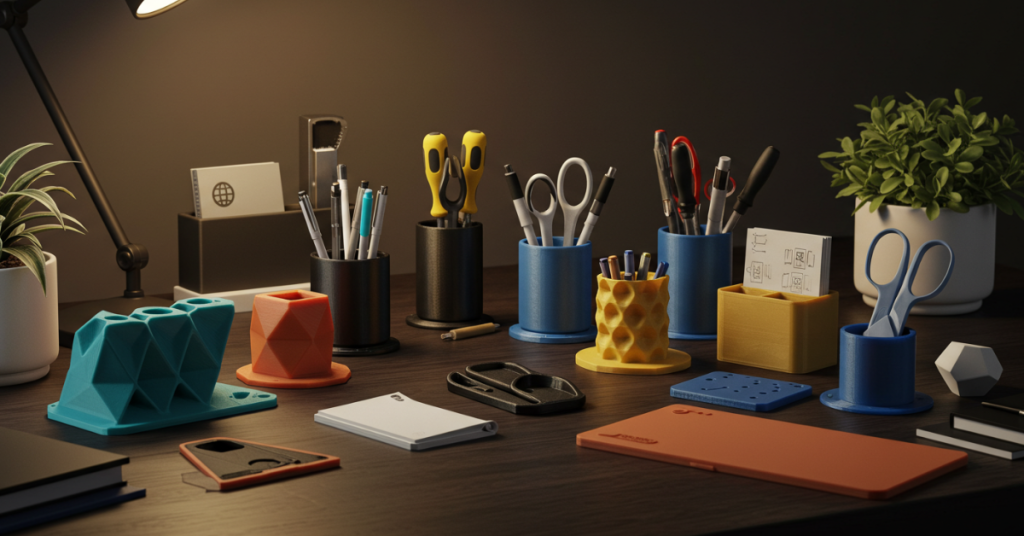
A tidy workspace is essential for productivity and focus. With 3D printing, you can create custom desk organizers tailored to your specific needs and space. Whether it’s a holder for your pens, a stand for your phone, or a compartmentalized system for all your small office items, these personalized organizers can help streamline your workflow and keep your desk clutter-free.
Business Card Holders
First impressions matter in the professional world, and a unique business card holder can be a subtle yet effective way to stand out. 3D print your custom business card holder that reflects your personal or company brand, ensuring you present your cards in a way that’s both professional and memorable.
Laptop Stands
Ergonomics is key to maintaining productivity and comfort throughout the workday. A custom laptop stand can help improve your posture and reduce strain by elevating your device to the ideal height and angle. With 3D printing, you can design a stand that not only supports your laptop perfectly but also fits the aesthetic of your workspace.
Customized Tools and Equipment
Depending on your profession, there might be specific tools or equipment that could benefit from a personalized touch. For artists, this might mean tailored brush holders or unique palette designs. For engineers or technicians, custom casings, mounts, or even specialized tools can be 3D printed to suit particular tasks or preferences, enhancing efficiency and precision on the job.
Prototyping and Models
For designers, architects, engineers, and many other professionals, being able to quickly and affordably create prototypes or models is invaluable. 3D printing allows for rapid production of high-fidelity prototypes, enabling teams to test, iterate, and visualize their projects more effectively. This not only speeds up the development process but also leads to better end products.
Educational and Training Aids
In educational or training settings, custom 3D printed models can be highly beneficial. Whether it’s anatomical models for medical students, architectural models for engineering courses, or interactive tools for corporate training, 3D printing provides tangible, interactive aids that enhance learning and understanding.
Personal Protective Equipment
In certain industries, personal protective equipment (PPE) is crucial. 3D printing has been used to create everything from custom-fitted masks to protective visors and equipment parts. Especially during times of shortage or specific needs, being able to produce PPE on demand is a significant advantage of 3D printing.
3D printing offers a multitude of applications for the workplace, enhancing both the individual work experience and the collective efficiency of a team. From personalizing your workspace with unique organizers and stands to improving processes with custom tools and prototypes, the potential of 3D printing in a professional setting is vast. As technology continues to evolve, it’s likely that even more innovative and beneficial uses will emerge, further revolutionizing how we work and create in various industries. Whether you’re an entrepreneur, artist, educator, or engineer, 3D printing holds the potential to make your work more efficient, personalized, and innovative.
For Fun
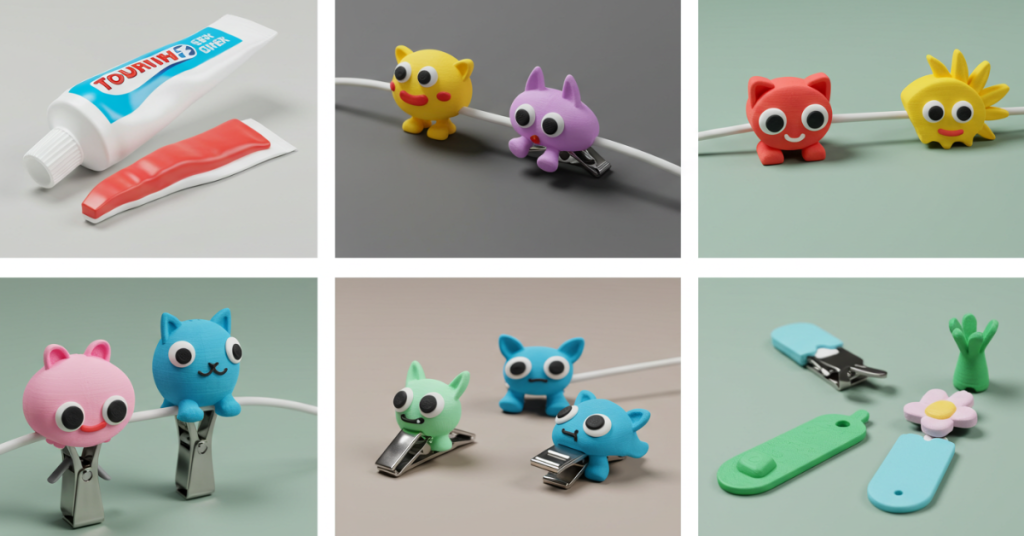
3D printing isn’t just about practicality and work; it’s also a fantastic avenue for entertainment, hobbies, and personal expression. This technology opens up a world of possibilities for creating items that add a bit of fun, creativity, and joy to life. Let’s explore how 3D printing can be used to craft items for leisure, hobbies, and all-around fun.
Board Game Pieces
For board game enthusiasts, 3D printing is a game-changer. Lost a piece? Print a replacement. Want to upgrade your game with custom figures or tokens? Design and print your own. You can even create entirely new games or expand existing ones with your own unique twist. 3D printing allows you to personalize your gaming experience and bring new ideas to the table—literally.
Cosplay Accessories
Cosplay is all about precision and detail, and what better way to achieve this than by creating your own custom accessories and costumes. From intricate armor pieces to detailed props, 3D printing lets you bring your favorite characters to life with accuracy and flair. Whether you’re a seasoned cosplayer or just starting out, 3D printing can take your costumes to the next level.
Musical Instruments
Believe it or not, you can 3D print functional musical instruments. From flutes and violins to more experimental designs, 3D printing opens up a world of sonic possibilities. These instruments might not replace their traditional counterparts entirely, but they offer a unique and accessible way to explore music-making, whether you’re an experienced musician or just looking for a new hobby.
Toys and Figurines
Whether you’re a collector or looking to create unique toys for children, 3D printing allows you to create figurines and toys of all shapes and sizes. Design your own characters, recreate your favorite ones, or even involve kids in the design process for a fun family activity. The possibilities are as limitless as your imagination.
Art and Sculptures
3D printing is not just a manufacturing tool; it’s also a medium for artistic expression. Artists around the world are using 3D printers to create sculptures and installations that were previously impossible or prohibitively expensive. Whether you’re an artist looking to explore new forms or just want to create some decorative pieces for your home, 3D printing can help bring your vision to life.
Custom Puzzles
Imagine creating a puzzle where you decide the shape, size, and complexity. 3D printing allows you to do just that. You can create traditional jigsaw puzzles with your own images or design entirely new types of puzzles that challenge the mind in different ways. It’s a fun way to test your problem-solving skills and enjoy a completely personalized puzzle-solving experience.
Model Making
For hobbyists interested in model making—whether it’s trains, planes, automobiles, or fantasy scenes—3D printing offers the ability to create detailed parts and accessories. Customize your models to an unprecedented degree, or even create entirely new models from scratch. It’s a fun and satisfying way to engage with your hobbies on a deeper level.
3D printing for fun encompasses a wide range of activities and interests. From gaming and cosplay to music and art, it provides the tools to explore, innovate, and express yourself in new and exciting ways. As the technology becomes more accessible and the community of creators grows, the potential for fun and creative 3D printing projects only continues to expand. Whether you’re looking to enhance your hobbies, explore new forms of artistic expression, or simply have fun creating unique items, 3D printing offers a world of possibilities for making life a little more enjoyable and a lot more interesting.
How to Choose What to Print?
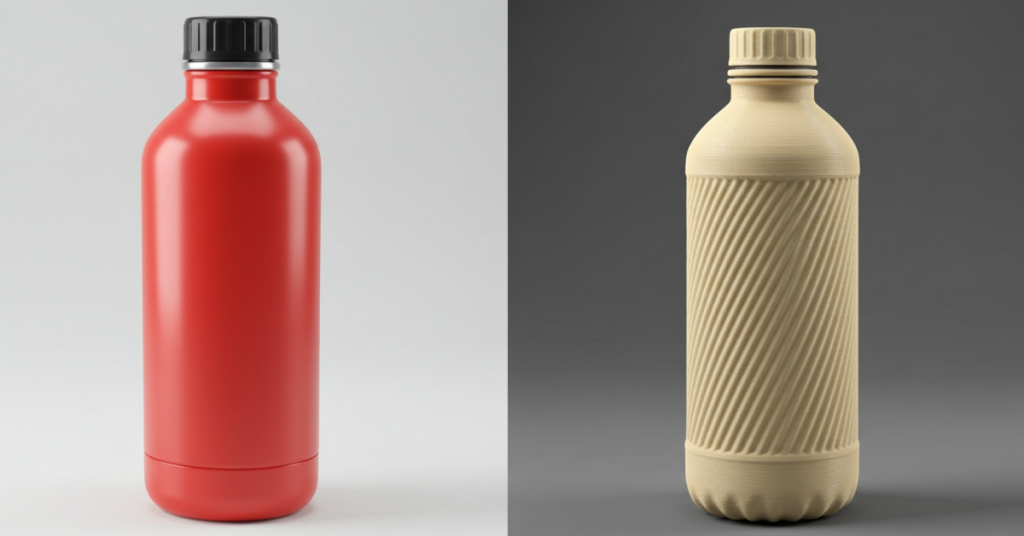
Considering Utility
When delving into the world of 3D printing, one crucial aspect to consider is the utility of the items you choose to print. Utility, in this context, refers to how functional, practical, and beneficial the printed items are in everyday life. Making choices based on utility ensures that your 3D printing endeavors are not just about creating novel items but about adding real value to your daily routines. Let’s explore what to consider when assessing the utility of 3D printed items.
Assessing Needs and Solving Problems
The first step in considering utility is to identify everyday challenges or needs that can be addressed through 3D printing. Do you frequently misplace your keys? A custom key holder might be the solution. Need to organize your workspace? Consider printing desk organizers or cable holders. By focusing on solving real-life problems, you ensure that your 3D printing projects have a purpose and add tangible value to your life.
Longevity and Durability
Utility also involves considering the longevity and durability of the items you print. It’s important to select the right materials and designs that ensure the items will last and function effectively over time.
For instance, if you’re printing a tool or a component that will be under stress, choosing a durable material like ABS (Acrylonitrile Butadiene Styrene) might be more appropriate than PLA (Polylactic Acid).
Functionality and Efficiency
Another aspect of utility is the functionality of the item. A well-designed 3D printed item should not only look good but also perform its intended function efficiently. This might mean creating ergonomic designs that are comfortable to use, or ensuring that the item integrates well with other objects or systems in your home, workspace, or personal life.
Customization for Enhanced Use
Utility can be greatly enhanced through customization. 3D printing allows you to tailor items to fit your specific requirements or preferences, making them more useful and relevant to your needs. For example, creating a phone stand that fits your specific phone model and charging setup can significantly increase its utility compared to a generic store-bought version.
Space Optimization
In many scenarios, especially in smaller living or working spaces, the ability to optimize space can be a significant aspect of utility. 3D printing offers the ability to create items that make efficient use of available space, such as corner shelves, under-desk organizers, or wall-mounted holders, helping to keep your space organized and functional.
Multipurpose and Versatile Designs
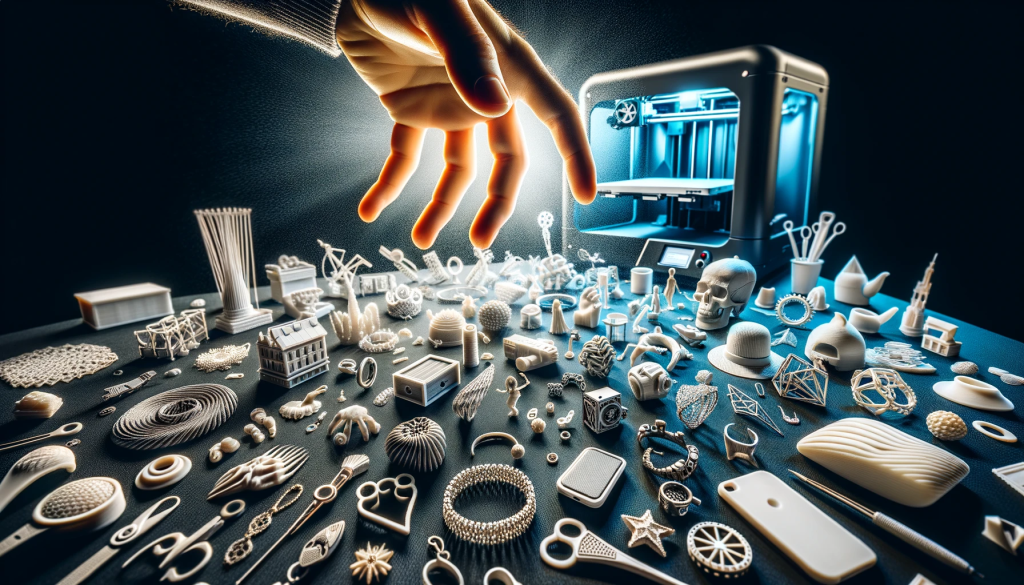
Consider printing items that serve multiple purposes or can be adapted for various uses. This not only maximizes the utility of each print but also reduces the need for multiple items, saving space and resources. For example, a modular storage system that can be rearranged to suit different contents and spaces can be more useful than a single-purpose container.
Considering utility in 3D printing is about making thoughtful choices that lead to creating items that are not only innovative and interesting but also practical and beneficial in real-life scenarios. It’s about merging creativity with pragmatism to produce items that enhance efficiency, solve problems, and improve daily life. By focusing on utility, you ensure that your 3D printing projects are meaningful and contribute positively to your or others’ routines and environments.
Assessing Complexity
When embarking on a 3D printing project, understanding and assessing the complexity of the item you intend to print is crucial. Complexity in 3D printing can refer to various aspects, including design intricacy, printing technique requirements, material considerations, and post-processing needs. Navigating these factors effectively can lead to a successful and satisfying printing experience. Here’s a deeper dive into what assessing complexity entails and why it’s important.
Understanding Design Intricacy
The complexity of a 3D print often starts with its design. Intricate designs with detailed patterns, overhangs, or moving parts require careful planning and execution. Before printing, consider:
- Detail Level: How fine are the details of your print? High-detail prints may require slower print speeds or special materials.
- Overhangs and Supports: Does your design include parts that jut out or hang over without anything beneath them? These might require support structures that need to be removed post-printing.
- Moving Parts: Are you planning to print an object with moving parts all in one go? This can significantly increase complexity and might necessitate specific print settings or assembly post-printing.
Choosing the Right Material
Different materials have different properties and are suited to different types of projects. Some materials are easier to work with and more forgiving of less-than-perfect print settings, while others might require precise temperature control, humidity considerations, or special storage. When assessing complexity, consider:
- Material Properties: Does the material require special handling, like a heated bed or enclosure? Is it prone to warping or shrinkage?
- Purpose of the Print: Is the material appropriate for the intended use of the printed item? For instance, if you’re printing something that will be outdoors, you might need a UV-resistant or waterproof material.
Printing Technique Requirements
Your chosen printing technique can add to the complexity of the project. Different types of 3D printing technologies, like Fused Deposition Modeling (FDM), Stereolithography (SLA), or Selective Laser Sintering (SLS), each have their own set of considerations and best practices. Think about:
- Printer Capabilities: Can your printer handle the level of detail or the material you want to use? Does it have the precision required for the task?
- Print Settings: Do you understand the necessary settings, such as layer height, print speed, or infill density, for your specific model and material?
Post-Processing Needs
After the print is complete, there might still be work to do. Complex prints might require significant post-processing, including:
- Support Removal: Prints with many supports will require careful removal of these structures without damaging the print.
- Surface Finishing: Will your item need sanding, painting, or other finishing touches to achieve the desired look and feel?
- Assembly: If your print has multiple parts or moving components, consider the time and tools needed for assembly.
Time and Resource Investment
Complexity also relates to the time and resources you’re willing to invest. A complex print might require:
- Longer Print Times: More intricate or larger items will take longer to print, sometimes running into days.
- Material Costs: Using specialized materials or large quantities can increase costs.
- Learning Curve: Are you prepared to invest the time to learn the necessary skills to successfully complete a complex project?
Assessing complexity before starting a 3D printing project is about understanding the challenges and requirements of the task at hand. By considering design intricacy, material choices, printing techniques, and post-processing needs, you can better prepare yourself for the project’s demands. Understanding the complexity helps in setting realistic expectations, planning effectively, and ultimately leads to more successful and satisfying 3D printing experiences. Whether you’re a seasoned 3D printer or just starting out, taking the time to assess the complexity will help ensure that your journey from digital model to physical object is as smooth and enjoyable as possible.
Getting Started with 3D Printing
Choosing the Right Printer
Selecting the right 3D printer is a critical step in your 3D printing journey. With a myriad of options available, each suited to different needs, preferences, and budgets, understanding what to look for can ensure that you invest in a printer that matches your specific requirements. Here’s a deeper look into the factors you should consider when choosing the right 3D printer.
Understand the Different Types of 3D Printers
Before making a decision, familiarize yourself with the main types of 3D printing technologies:
- Fused Deposition Modeling (FDM): Uses a heated nozzle to melt and extrude thermoplastic filament, layer by layer, to create an object. It’s the most common and generally the most budget-friendly option.
- Stereolithography (SLA): Uses a laser to cure liquid resin into hardened plastic in a process called photopolymerization. Known for high detail and smooth finishes.
- Selective Laser Sintering (SLS): Uses a laser to fuse small particles of polymer powder into a solid structure. It’s typically used in professional settings due to its high cost and complex operation.
Consider Your Use Case
Think about what you’ll be printing to determine which printer is the best fit:
- Hobbyist and Home Use: If you’re a beginner or looking to print items for personal use, an FDM printer might be the most cost-effective and versatile option.
- Professional and Industrial Use: For professionals needing high precision and quality, like architects or engineers, an SLA or SLS printer might be more appropriate.
- Educational Use: If the printer is for a school or educational setting, look for user-friendly features and robust construction.
Print Quality and Resolution
The quality of your prints is largely determined by the resolution of the printer, measured in microns – the lower the number, the higher the resolution. Consider:
- Layer Height: Smaller layer heights can produce smoother surfaces but might increase print time.
- X-Y Resolution: This determines the level of detail in the horizontal plane and is especially important for intricate designs.
Print Size and Volume
Consider the maximum size of the objects you plan to print. Printers have limits on the size of the objects they can produce, known as the build volume. If you’re looking to print large items or multiple pieces at once, ensure the printer’s build volume meets your needs.
Material Compatibility
Different printers can handle different materials:
- Filament Options for FDM: PLA, ABS, PETG, and more specialized filaments are available. Consider what materials you’ll need for your projects.
- Resin Options for SLA: Different resins offer varying properties, from flexible to high-strength.
- Powder Options for SLS: While offering strong and durable results, note that SLS printers typically require more advanced materials handling.
Ease of Use and Connectivity
Especially for beginners, look for printers with user-friendly interfaces, straightforward software, and reliable customer support. Consider also the printer’s connectivity options, such as USB, Wi-Fi, or SD card slots, for ease of transferring designs.
Reliability and Maintenance
Some printers are known for their reliability and low maintenance needs. Read reviews and consider brands with a good reputation. Also, look at the availability of replacement parts and the level of maintenance the printer requires over time.
Budget
Last but certainly not least, consider your budget. Prices for 3D printers can range from a few hundred to several thousand dollars. While cheaper models might be appealing, ensure they meet your quality and usability needs. Sometimes, investing a bit more upfront can save you time and money in the long run.
Choosing the right 3D printer is about balancing your needs, expectations, and budget. By understanding the different types of printers, considering your use case, and paying attention to factors like print quality, material compatibility, and ease of use, you can select a printer that not only fits your current needs but also grows with you as you explore the vast, creative world of 3D printing. Whether you’re a hobbyist, educator, or professional, the right printer is a gateway to bringing your ideas to life.
Finding Designs Online
Once you have your 3D printer set up and ready to go, the next step is to find designs to print. Whether you’re looking for simple household items, intricate art pieces, or functional tools, the internet is a treasure trove of 3D printing designs. Here’s how you can find and utilize online resources for 3D printing designs.
Online 3D Model Repositories
There are several websites dedicated to 3D printing where users can upload and share their designs. Some of the most popular include:
- Thingiverse: Perhaps the most well-known repository, offering a vast array of free designs across categories.
- MyMiniFactory: Features a wide selection of 3D models vetted for quality, with both free and paid options.
- YouMagine: Hosted by Ultimaker, this site offers thousands of free designs, often focused on innovation and engineering.
- Cults3D: A growing community offering both free and paid 3D printable models.
Specialty Sites
Depending on your interests, there might be specialized sites offering 3D models in niche categories:
- Shapeways: While primarily a marketplace to buy and sell custom 3D prints, Shapeways also offers some downloadable models.
- Pinshape: Offers a mix of free and premium 3D designs, with a user-friendly interface and active community.
- GrabCAD: A great resource for engineers and professionals looking for high-quality industrial and mechanical models.
Check for Compatibility and Licensing
Before downloading and using a design, check a few important details:
- File Format: Ensure the file is in a format compatible with your 3D printer. Common formats include STL, OBJ, and AMF.
- Licensing: Respect the creator’s licensing choice. Some models are free to use and modify, while others might have restrictions.
- Printability: Not all designs are optimized for 3D printing. Look for models that have been tested or verified for printability.
Design Communities and Forums
Engaging with 3D printing communities can provide not only access to designs but also support and inspiration. Consider joining forums like:
- Reddit’s 3D printing community: A place to share designs, experiences, and troubleshooting tips.
- 3D Printing Group on Facebook or LinkedIn: Many social media platforms have groups dedicated to 3D printing enthusiasts.
Learning to Create Your Own Designs
While downloading designs is a great way to get started, learning to create your own can be incredibly rewarding. Consider learning a 3D modeling software such as:
- Tinkercad: A beginner-friendly online design tool.
- Fusion 360: For more advanced users, especially useful for mechanical and industrial designs.
- Blender: A powerful tool for those interested in creating detailed artistic models.
Tips for Selecting Designs
- Read Comments and Reviews: Other users’ experiences can give you insight into the quality and printability of a design.
- Look at Makes: Some sites allow users to post photos of their finished prints, which can give you an idea of how the design looks when printed.
- Start Simple: If you’re new to 3D printing, start with simpler designs and gradually work your way up to more complex projects.
Finding designs online is a relatively straightforward process thanks to the abundance of resources available. Whether you choose to download existing designs or create your own, the world of 3D printing offers endless possibilities. By engaging with communities, respecting licensing agreements, and starting with user-friendly designs, you can make the most of your 3D printing experience. Remember, every print is a learning opportunity, and each project brings you one step closer to turning your ideas into tangible realities.
Your Journey Begins Now
Embarking on your 3D printing adventure is an exciting step towards greater creativity and self-sufficiency. Remember, the only limit is your imagination!
FAQ
- Do I need to be tech-savvy to start 3D printing?
No, while some technical knowledge is beneficial, many resources and communities are available to help beginners. - How expensive is 3D printing?
The initial cost can vary, but once set up, creating items can be quite cost-effective. - Is 3D printing time-consuming?
Print times can vary greatly depending on the size and complexity of the item, but the results are worth the wait! - Are there limitations to what I can print?
While there are some limitations, the range of possible prints is vast and continually expanding. - Can I make money from 3D printing?
Yes! Many people sell their prints or the models they create, turning a hobby into a lucrative business.

